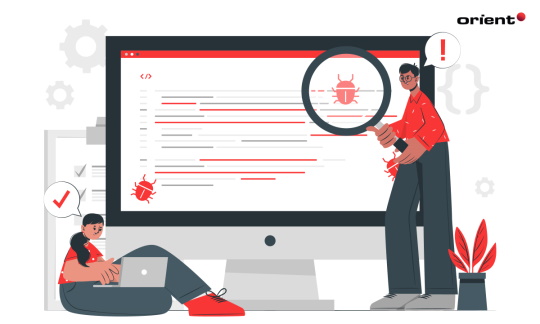Popular Java Testing Frameworks for Developing High Quality Software

Content Map
More chaptersJava testing frameworks are used in many successful software development projects. Their popularity is well-earned for many reasons, but the best reason is that they enable thorough quality assurance by automation.
What Is Software Testing?
Software testing is a phase in the software development life cycle in which the mobile or web applications under development is subjected to various types of tests to determine if it meets expected requirements and key performance metrics. The development or quality assurance team runs tests on various parts and functions of the software. This phase is carried out to detect bugs and issues early on, and resolve them, before deployment or production.
Overall, software testing makes sure your new application performs as intended, lighten support and maintenance, and meet your business goals.
What Is a Testing Framework?
A testing framework is a set of guidelines and rules for creating test cases, or user stories, to help the quality assurance team test more efficiently. It defines the basic structure, a blueprint, or a strategy, for the entire testing process.
A testing framework goes hand in hand with automated testing. In fact, test automation frameworks and testing frameworks are the same things. Test automation frameworks minimize errors and maximize efficiency for an often tedious process.
What Is a Java Testing Framework?
A Java test framework, therefore, is a testing framework using Java or JavaScript. Java programming language is one of the most popular scripts in the world. It is popular because:
- Java is platform independence. Programs written in Java can be run on any platforms, servers, types of computers, as long as it has a Java Runtime Environment (JRE) installed. This flexibility allows you to scale up for new demands.
- Java is easy to use, compile, write, and debug. Testing is made simpler with Java.
- Java has an active and supportive community of Java developers. There are many Java frameworks (software libraries designed to make building software easier and faster).
Therefore, Java testing frameworks are a good choice for your software testing, because they work with the majority of applications. Most likely, your developers are already using Java, or have experience with Java.
Why Do We Need to Use Testing Frameworks?
The short answer is: testing frameworks enable automation in testing. As you’ve heard before, automation may require heavy initial investment, but saves time, effort, and money in the long run. Manual testing is still necessary, but as your project grows, automation testing is the way to go.
Here are the specific reasons why Java testing frameworks, and automation testing, are so commonly used.
Optimize resources
A testing framework provides a set of processes to help you better manage the quality of your project. It does so by matching available resources to the business requirements. Doing so, it reduces wastes or over-spending on the shortcomings that may arise.
Test more in less time
Thanks to automation, each and every aspect of your application is tested thoroughly and more frequently, with your precious man-hours being allocated to more advanced tasks. A testing framework can simultaneously test your app on all the new devices that come out while your apps are under development. Since the parameters are the same, your testers can quickly generate comparative test reports, letting you know the devices and specifications with which your app has the optimal compatibility.
Moreover, you can run several testing scenarios of how a user may use the functions of your app, and get the test results fast. This saves time on writing and running test cases for your testers, while also shrinking the chances of errors.
Your testers can also work remotely, or letting the framework run while leaving the office. This enhances work-life balance for your whole team, a plus for your employer branding.
Fix bugs earlier
A Java testing framework can be set up to recognize bugs thoroughly, at every stage of development. For approaches such as Test-Driven Development and Behavior-Driven Development (see below), creating automation testing as early as possible in the software development life cycle is crucial to ensure high quality software in the shortest timeframe.
Reuse and maintain automation code for higher ROI
The test cases, test code, or test scripts can be reused in a different application with similar functionality. Reusing works best for common functions such as login or signup. Since testing works facilitate seamless test maintenance, it is easy to keep your tests up to date with code changes, enabling scalability.
Overall, this increases the ROI of your initial investment in a testing framework. It is true that the initial investment in a testing framework can be discouraging, but just like the machines of the previous industrial age, you can go far with these automation frameworks. Remember that automation testing means saving on salaries for testers, as you would need less testers, allowing you the budget to afford the best of the bunch.
Below we briefly explain three approaches to software development in Agile that puts test automation front and center. They influence how testing frameworks are used.
Test-First Approaches: TDD vs. ATDD vs. BDD
These are three approaches that centers around testing. Figuratively speaking, they are like the students who study just enough to pass the tests - the ‘study’, i.e. development, is highly focused, specific, and committed to fulfilling requirements.
Test-Driven Development (TDD)
TDD, also known as the Red - Green - Refactor cycle, is simple:
#1. Business requirements are translated into specific test cases.
#2. The code is written to pass the tests (turn Red into Green)
#3. The code is refactored for high code quality and no technical debt
TDD is great for unit testing. This is all about answering the question “Are we building the thing right?”. However, unit tests are developer-centric - they do not help the business people understand how good unit tests results solve their problems. Thus, the other two approaches enhance more well-rounded collaboration.
Acceptance Test Driven Development (ATDD)
ATDD fosters collaboration between the tech and the business sides. Testers, developers, and business stakeholders discuss and agree upon the requirements for the app, expressed in plain English so that everyone can understand. Then these requirements are translated into automated acceptance tests using the testing frameworks. The functionality of the app is verified against a set of acceptance criteria through conversations with the relevant stakeholders. Acceptance testing helps the teams answer the question “Are we building the right thing?”.
TDD and ATDD are good for small projects, but for bigger projects, like a complex system, then Behavior-Driven Development is better suited.
Behavior Driven Development (BDD)
In BDD, the technical and business stakeholders create simple scenarios of usage from the end users’ perspective - how the system should behave when a user interacts with it. Instead of test cases, which can be too narrow for a complex system, user stories are written, with scenarios that capture the acceptance criteria. Doing so, the expectations of the end users, and their user experience, are accounted for in developing large enterprise apps. In simple words, there is less room for misunderstanding between the technical, the business people, and the end users.
Which approach is best for your project? TDD is best for small projects. ATDD and especially BDD are better suited to large projects, with remote, distributed teams, and working with other non-technical teams. Regular and effective communication between the tech and business people are crucial for successful ATDD and BDD project management.
These test-first approaches to software development influence how a team may use testing frameworks. Let’s get into detail of some of the common Java testing frameworks.
Common Java Testing Frameworks to Use
Below are some common Java test suites that work for a range of projects.
JUnit: unit testing & regression testing
JUnit is probably the most well-known Java unit testing framework. A unit test checks individual components of a software. Unit testing is the most basic, and most common type of software testing. As a unit testing frameworks, JUnit is the obvious choice for a TDD environment.
Note that Mockito is also another good choice of a Java testing framework for unit testing.
Regression testing verifies updates or modifications to make sure they do not affect the overall functionality. Use JUnit for regression testing when you add new functions, fix bugs, or update current features.
TestNG: cover many types of tests
Derived from JUnit, TestNG is an open source automation testing framework. It covers a range of tests. Use this Java testing framework when you need to do the above tests and more, such as functional testing. However, setting up TestNG takes time, so use it when you have the time for this.
Selenium: cross browser testing
This Java testing framework tests whether your web apps run on various operating systems, browsers, and browser versions, with no issues. Use Selenium when you have added new features to your web app, to make sure it is in perfect working order before releases. Moreover, it can integrate seamlessly with popular testing frameworks such as JUnit and TestNG.
JBehave for BDD
JBehave is probably the most well-known Java testing framework for large BDD projects. It serves integration among distinct developer teams engaged with various projects.
Remember that since JBehance works in a BDD environment, frequent communication between the teams of different roles cannot be emphasized enough. If there is communication issues among your teams, give it a second thought to avoid a blame game when things go south later on.
JBehave is often used alongside Serenity, another Java testing framework. Serenity supports several automated acceptance test solutions.
Selenide: best for UI testing
Selenide comes ready to use, saves time, and your testers can write less code. This Java testing framework provides precise, stable UI test cases. It comes highly recommended.
Consult Quality Assurance Team for the Best Java Testing Frameworks

Java testing frameworks are as popular and useful as Java itself, so it presents a good choice for projects large and small. The testing frameworks can be used together, or on its own, as needed. The ones to go for should have good community support, available talent, and compatibility with your project requirements.
Choosing a Java testing framework, and understanding how it works, is a highly technical skill. Therefore, do consult a competent quality assurance team for professional insights to make the best informed decisions for your project.







